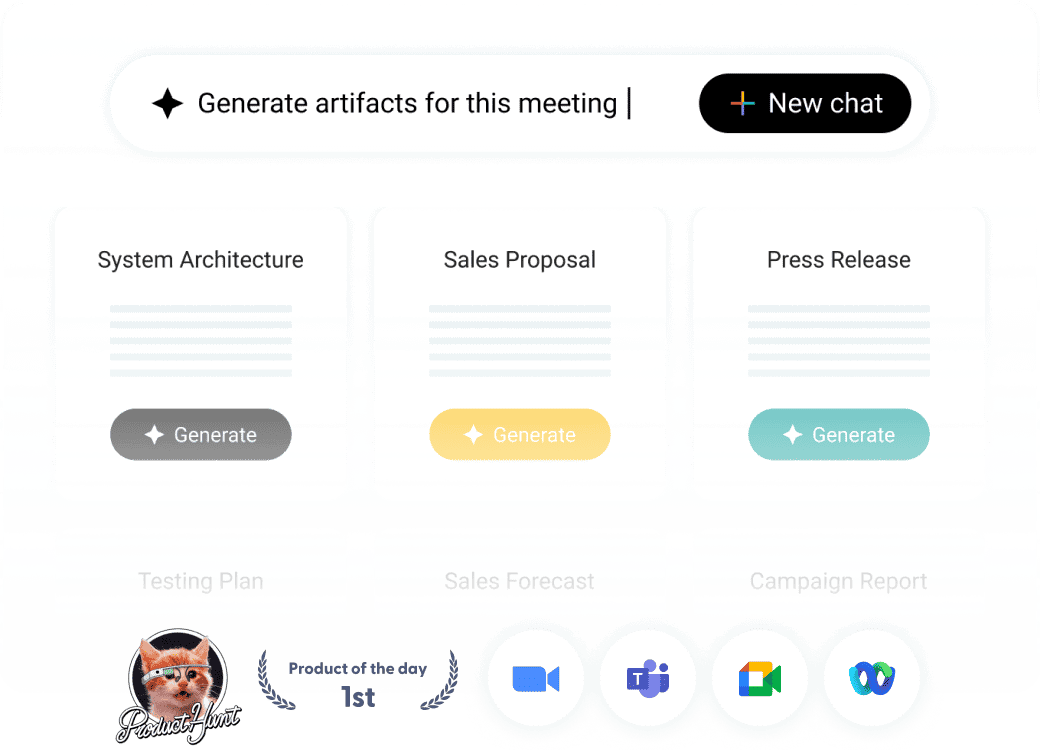Table of Contents
ToggleRecently updated on February 6th, 2025
Sales is a dynamic field where the success of your team truly plays a critical role. Small or big, sales improvement is an important task needed for the business to have a long-term competitive advantage. This guide will provide actionable strategies and expert-backed tips on how to improve sales performance to help you drive results.
What is Sales Performance?
Sales performance is how well the sales team meets the sales goals assigned to them — income realization, customer acquisition, and market penetration. It quite clearly describes the critical health of a company in terms of its sales operations and its potential for sustainable growth.
So, while you may be managing an experienced group of sales managers or bringing fresh blood into your task force, improving performance will always be an ongoing process. But what exactly defines strong sales performance? Metrics like conversion rates, sales cycle length, and customer retention provide tangible indicators. These metrics help businesses assess their performance improvement journey and identify key areas of focus.
Why Improving Sales Performance Matters
This is an important aspect of any business. Business with high-performance sales teams generates revenues as well as customer satisfaction and long-term brand loyalty. Consider this: a recent study shows that companies that align their sales performance improvement plans with strategic sales targets experience 38% higher revenue growth.
How much potential gets wasted by not-so-good sales processes then? By focusing on increasing sales performance, organizations can uncover untapped opportunities and strengthen their competitive edge.
1. Enhancing Revenue Streams
High sales performance directly correlates with increased revenue. By maximizing the potential of every lead, deal, and customer interaction, your team can turn opportunities into tangible growth. For instance, a fully optimized sales funnel guarantees that no valuable prospects slip through the cracks, thus leading to a constant and predictable revenue stream.
Also, concentrate on upselling and cross-selling so as to unlock more revenues from existing customers. When your team is at its best, you maximize every opportunity with every lead, deal, and customer interaction to create a consistent-growing revenue stream.
2. Strengthening Customer Retention
Consumers who are satisfied return to purchase more as well as make referrals. Trust and satisfaction are enhanced through retention strategies such as personalized follow-ups and loyalty programs, along with proactive problem-solving. What is more, the performance of your team can sustain relationships beyond simple repeat business, as it inspires and engages consumers into advocacy in favor of your brand.
Did you know that a just 5% increase in client retention can boost profits by 25% to 95%? Customer loyalty is automatically strengthened when you focus on improving sales performance since it guarantees that your employees are focused on building relationships and delivering constant value.
3. Optimizing Team Efficiency
A team equipped with clear goals, proper tools, and efficient processes operates at peak performance. It is therefore important to implement streamlined workflows and leverage tools such as CRM systems that help the sales representatives eliminate duplicate tasks. This way, repetitive tasks, such as sending emails or entering data, can be fully automated, thus creating a lot of time for the team to work on major activities like closing deals and managing relationships. This minimizes wasted effort and maximizes output, contributing to overall performance improvement.
4. Boosting Competitive Advantage
In a competitive environment, organizations with the best sales teams develop a valuable differentiation. High sales performance will help you have an advantage over your rivals in terms of holding a greater customer base and providing better customer service. Leveraging insights from sales data ensures you’re always ahead of emerging trends, positioning your team as leaders in innovation and customer satisfaction.
Strong performance also builds credibility and trust, attracting new prospects who seek reliable partners. Increasing sales performance ensures that you stay ahead of the competition by capturing more market share and delivering better customer experiences.
5. Driving Long-Term Growth
Meeting objectives and benchmarks is just one aspect of sales performance; but it is also the cornerstone of the company’s long-term expansion. By following it, your performance improvement strategy will be sustainable and aligned with the overall goals of the company.
Organizations that embrace customer feedback and make use of facts and figures when making their decisions are in a favorable position to adjust to constant shifts within the market. When you develop a strong sales plan, you are able to capitalize on future possibilities and at the same time outperform competitors in the long run.
8 Expert-Backed Methods to Improve Sales Performance

To enhance sales performance, there needs to be the integration of several strategies that are informed by data, new technologies, and a proper understanding of the customer.
This section presents the most effective strategies that can help companies boost their sales activities and gain a sustainable increase in performance. The following approaches can be incorporated into your organization with the aim of enhancing your team’s productivity, boosting revenue, and guaranteeing the sustainability of the organization.
1. Assessing Your Current Sales Performance
It has been said that “What gets measured, gets managed.” As stated in this proverb, even before you have made preparations to enhance sales performance, you first have to determine the current state of them. Evaluating an entire pipeline of sales together with performance metrics is the basis of any enhancement plan. Start by identifying:
- Conversion rates: In simple terms, it is the percentage of leads that become customers. Break this down to understand bottlenecks in your sales process.
- Sales cycle duration: How much time it takes to complete a sale? Shorter cycles are more effective due to better and smoother processes.
- Customer retention rates: Are your customers still engaged with your business? This means that strong relationship management leads to high retention rates.
Also, engage your sales team and your customers to establish where the strategy is faulty or where there is misalignment. Regularly conducting sales evaluations will help you identify shortcomings and provide you with an opportunity to come up with sound initiatives that can be implemented to eliminate them. To make informed decisions, you can also take advantage of dashboards and analytic tools.
2. Leveraging Data and Technology
It can be as simple as identifying the right prospects to reach out to or as complicated as optimizing the marketing strategies. This is where customer relationship management (CRM) systems come into play as they provide real-time insights into the buyer’s behavior and the sales process. CRMs allow you to:
- Track customer interactions and preferences
- Identify patterns that lead to successful conversions
- Automate routine tasks like follow-ups and reporting
McKinsey claims that organizations may boost lead and appointment generation by 50% by utilizing AI-enabled sales tools. By offering predictive insights into client behavior and demands, artificial intelligence empowers teams to make data-driven decisions. By implementing products like Sembly from Sembly AI and its automated Sales document creation extension Semblian 2.0, companies can leverage data analytics to optimize sales processes and increase efficiency and results.
3. Building a High-Performing Sales Team
Great sales performance starts with a motivated and skilled team. To build a high-performing team, focus on:
- Continuous training: Equip your team with the latest sales techniques and industry insights. Workshops, online courses, and role-playing exercises can therefore enhance self-efficacy.
- Performance-based incentives: Identify and appreciate the best performers to encourage the development of an excellent culture. Such incentives include bonuses, promotions, or even public recognition, which can produce great results.
- Individualized development plans: Identify the strengths and weaknesses of each team member. Tailored performance improvement plans ensure everyone is progressing and contributing effectively.
Additionally, promote collaboration within your team. It is thus important to share successful approaches and to develop a culture that supports risk-taking. A high-performing sales team not only achieves the set goals and beyond but also provides a benchmark for sustained success. Investing in continuous training and development ensures your team stays ahead of industry trends and adopts best practices.
For instance, the use of performance incentives can motivate the team to go the extra mile. Furthermore, developing a performance improvement plan that is specific to the person’s strengths and weaknesses can also help in growth and teamwork.
4. Aligning Sales and Marketing for Seamless Execution
It is crucial for sales and marketing to be synchronized so as to develop a smooth customer path. This way, the two teams work together and there is no misunderstanding as well as the message that is given to the customers is consistent. Key steps to achieve alignment include:
- Defining shared goals: Both teams should work towards common objectives, such as lead conversion rates or revenue targets.
- Collaborative planning: Regular meetings and joint strategy sessions help synchronize efforts.
- Using integrated tools: Platforms that combine sales and marketing data provide a single source of truth, improving decision-making.
Research shows that companies with tightly aligned sales and marketing teams see 36% higher customer retention rates. This synergy allows your business to deliver a consistent and impactful customer experience, ultimately driving higher performance to ensure a smooth customer journey. Misaligned teams often lead to lost opportunities and frustrated clients. By fostering open communication and shared goals, your teams can deliver a consistent and impactful customer experience.
5. Fostering a Customer-Centric Approach

Customer-centric sales strategies entail identifying and satisfying the customer’s needs. Are you being responsive to the customers’ needs and wants or forcing them to buy what you are offering? Surveys show that 73% of buyers want more relevant and personalized interactions with businesses. To foster a customer-centric approach:
- Leverage data insights: Use tools like CRMs to collect specific data about the customer’s preferences and behavior,
- Prioritize long-term relationships: Develop trust through the elements of transparency and consistent communication.
- Tailor solutions: Offer products or services that are specifically suited to meet the needs of the customer in terms of his/her problems and desires.
Encouraging your team to adopt this mindset results in better relationships, increased customer satisfaction, and enhanced retention. It is important to shift the focus from the immediate goals and results and start thinking about how to provide the customer with real value. This way, a customer is more likely to become an advocate of your brand and remain loyal.
6. Implementing Data-Driven Sales Strategies
Gone are the days of gut-feel sales tactics. Hence, it is crucial to leverage data to reshape your sales approach. It is possible to build strategies based on trends and performance metrics which teams can then optimize. Data-driven sales strategies allow you to:
- Identify high-value leads: Target the prospects that have the highest chances of becoming customers according to the data you have analyzed.
- Optimize sales campaigns: Use analytics to understand which part of the message and which channel will work best for your audience.
- Predict future trends: Be prepared for changes in customer behavior to outwit other businesses.
Tools like Semblian simplify this process by providing targeted recommendations suitable for your organization’s objectives. For instance, predictive analytics can assist in the effective utilization of resources while real-time data guarantees that your team always operates with the latest information. By incorporating such tools into your workflow you are not only enhancing sales but you are developing a more effective and proactive team.
7. Utilizing Incentives to Motivate Your Team
It is important to ensure that the sales force is motivated to enhance sales performance. Incentives are effective in ensuring that your team works hard to achieve better results as well as creating a healthy competition culture. Consider the following approaches:
- Financial rewards: If employees meet company-established goals and objectives, they may receive bonuses, commissions, or even a portion of the profits.
- Recognition programs: To boost motivation and team spirit, you can publicly acknowledge your top achievers and give them the credit they deserve.
- Career development opportunities: Make sure that the high-performing team members are well equipped with professional development tools such as training and mentoring.
Thus, not only does the performance of individuals increase thanks to the effective incentives, but also the spirit of teamwork and commitment to achieve the goals that enhance sales performance.
8. Boosting Sales Performance Through AI Integration
Artificial intelligence (AI) presents itself as a powerful tool that can bring positive change in the sales process through increased efficiency and better decision-making. The following are the ways through which AI tools help the sales teams in their work:
- Automating repetitive tasks: It can handle lead scoring, email reminders, and scheduling among other activities, thereby allowing the sales reps to focus on other important activities.
- Personalizing customer interactions: AI-based tools use customer information to make tailored suggestions and answers, thus improving their experience.
- Providing predictive insights: Using previous performance data, it is possible to make predictions on future outcomes and thereby assist the teams to be more effective.
For example, the chatbots can take responsibility for initial contact with the potential leads, this way the sales representatives can focus on high-level activities. Also, when AI is integrated with CRM systems, it becomes easier for the teams to understand the customers’ behavior and preferences, which makes it easier to seal the deal. Thus, the businesses that adopt AI-enabled solutions not only enhance the efficiency of their sales but also develop a more effective and efficient sales process.
How to Improve Sales Team Performance

So, how to improve sales team performance? Frankly speaking, what drives the profitability of the business is a successful sales team. However, fostering a high-performing team requires more than just setting targets; it is important to cultivate collaboration, continuous learning, and strategic execution. Here in this section, we will consider the most practical steps to empower the sales team, boost its efficiency, and help approach success sustainably.
Setting Clear and Achievable Goals
The first step is defining what success looks like. Clear and measurable goals give your team a roadmap to follow, ensuring alignment and accountability. For example, aim to increase sales performance by 20% within the next quarter through targeted campaigns and upselling strategies.
Encouraging Collaboration and Feedback
Sales is not a solo effort. By fostering a collaborative environment, team members can share insights, learn from each other’s experiences, and collectively improve performance. Regular feedback sessions help identify areas for improvement and celebrate successes.
Investing in Continuous Training
In a rapidly evolving market, ongoing training is essential. Equip your team with the latest tools, techniques, and knowledge to adapt to changing buyer behaviors. Personalized training programs tailored to individual roles ensure everyone can contribute to improving your sales performance.
Leveraging Peer Mentorship
Experienced sales reps can serve as mentors, offering valuable guidance and strategies to newer team members. A mentorship program not only enhances individual performance but fosters a collaborative team culture that drives overall success.
Monitoring and Rewarding Progress
Celebrate milestones and reward achievements to keep your team motivated. Recognition can come in many forms, from bonuses to public shoutouts. Acknowledging progress reinforces positive behaviors and encourages continued dedication to sales performance improvement.
Accelerate Sales Success and Optimize Performance with Semblian
Tools like Sembly from Sembly AI are designed to streamline sales processes and enhance performance. By leveraging AI and data-driven solutions, it helps sales teams uncover opportunities, optimize strategies, and drive results. With a focus on sales performance improvement, this tool is the ultimate partner for sales success.
FAQs
How to improve sales performance?
Focus on data-driven strategies to identify what works and what doesn’t in your sales process. Analyze customer data, track performance metrics, and refine your approach to maximize efficiency. Invest in team training to ensure everyone is equipped with the skills and knowledge to perform at their best. Finally, adopt tools like Semblian to streamline workflows, automate repetitive tasks, and uncover new growth opportunities through predictive insights.
How can I be more effective in sales?
Adopt a customer-centric approach by truly understanding your clients’ needs and tailoring solutions to address their challenges. Set clear, measurable goals to keep yourself focused and motivated. Leverage technology such as CRM systems to track customer interactions, enhance efficiency, and deliver personalized experiences. Remember, building trust and long-term relationships is key to sustainable success in sales.
How to increase sales 10 times?
Revolutionizing your sales approach starts with leveraging AI tools to optimize every stage of the sales funnel. Use AI-driven analytics to identify high-potential leads, automate repetitive tasks, and provide personalized customer experiences. Align your sales and marketing teams to ensure consistent messaging and seamless handoffs. Continuously refine your strategies by analyzing data insights and adapting to market trends. Remember, scaling sales requires innovation, collaboration, and a commitment to improvement.
What is the quickest way to increase sales?
Implement targeted marketing and sales campaigns that focus on high-potential leads and existing customers. Prioritize customer retention by enhancing service quality, offering loyalty programs, and ensuring consistent follow-ups. Utilize tools like Semblian to gain real-time insights, automate repetitive processes, and respond quickly to customer needs. Combining these strategies can yield rapid and measurable results.
Introducing Semblian 2.0
- ✦ Multi-Meeting Chats
- ✦ AI Insights
- ✦ AI Artifacts

![How to Improve Sales Performance and Drive Results [Data-Backed Tips] - Sembly](https://www.sembly.ai/wp-content/uploads/2024/12/адин.png)








